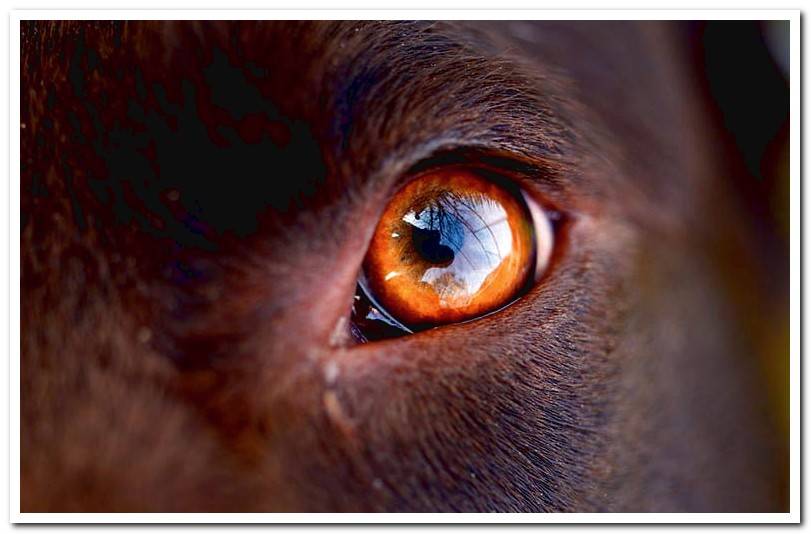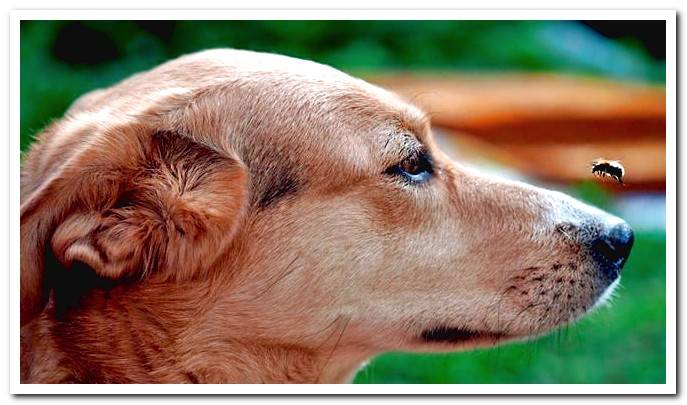
We all know what dogs are like, always sniffing here and there and eating whatever they find. For this reason, on many occasions they end up accidentally or intentionally intoxicating themselves, and may even die.
Knowing what are the first aid that we should give to an intoxicated dog is essential to help him survive while we arrive at our veterinary center. Let’s see what are the steps to follow.
- You may also like: How to resuscitate a dog with cardiorespiratory arrest
Index of contents
- 1 My dog is intoxicated. What do I do?
- 1.1 Important information we must collect
- 2 Should I make my dog vomit?
- 2.1 How to induce vomiting in a dog
- 2.2 The use of activated carbon
- 3 Skin or eye poisoning
- 4 Insect or animal poisoning
- 4.1 Contact with processional caterpillar
- 4.2 Snake or other animal bite
- 4.3 Insect bite
- 5 Inhalation poisoning
My dog is intoxicated. What do I do?
First of all we must remain calm, since his life will now depend on how we act. If we appreciate that our dog has symptoms of intoxication or we know for sure that it is intoxicated, the first thing we should do is call our vet.
Most veterinaryns have emergency telephones, where are available 24 hours a day. He will tell us how we should act and will also prepare everything for our arrival at the clinic.
Important information we must collect
Any details about how you have been poisoned will be of great help so that our vet can treat you once we reach your clinic. Therefore, if we know what product our dog has ingested, we must take it with us to the clinic for the vet to analyze it.
If our dog has vomited, we can collect a sample in a glass jar or even in a bag, to be analyzed later. Even if we notice any strange odor, we must write it down to report it to the vet, since many poisons have a characteristic odor:
- Gastric odor: Similar to the smell of garlic, it can indicate the use of arsenic, organophosphates, thallium and zinc phosphide.
- Acetone odor: Aspirin and other salicylates, acetone, benzene, taluene, felons, xylene, and isipropanol.
- Smell of bitter almonds: Associated with cyanide.
- Unpleasant and intense odor: Associated with the paraguel.

Should I make my dog vomit?
To think that by causing vomiting we will make the poison expelled is the most logical, but not the correct thing. In many situations causing vomiting can aggravate the condition of our dog, so we should never do anything without consulting our vet in advance.
If it has not been more than two hours since our dog was poisoned, and always under the supervision of our vet (You can advise us by phone before going to the clinic), we can take the following measures.
How to induce vomiting in a dog
The most common home remedy to induce vomiting in dogs is the use of 3% hydrogen peroxide (using between 1 and 5 milliliters per kilogram of weight of the dog and never exceeding 50 milliliters in total).
Hydrogen peroxide causes gastric irritation, which will produce vomiting. It has been shown to be more effective when the stomach is partially full, so we can give you some food beforehand.
The use of activated carbon
One of the most widely used absorbents for its effectiveness is activated carbon, which must be supplied at a rate of 2 to 5 grams per kilogram of the dog’s weight in suspension in water at 20%. Always following the instructions in the package leaflet.
All this will help keep our dog alive while we go to the veterinary clinic, but remember that you should not do anything without the prior consent of your vet.

Skin or eye poisoning
If the poison is on our dog’s skin and it comes in the form of a powder, we should brush the area with a stiff-bristled brush to clean the area. Being careful not to create chafing on your skin and preventing dust from reaching your eyes or mucosa.
If the toxic is liquid, we must apply plenty of water, constantly soaping and rinsing for at least fifteen minutes. If the liquid is oily, we can use a “dishwasher” degreaser like fairy, with special care that it never reaches your eyes or mucous membranes.
In the event that the toxic is in your eyes, we must apply plenty of water or serum. It will be complicated because being a very sensitive area our dog will not be left, but it is necessary to avoid major complications. In addition, we will put an Elizabethan necklace on while we go to the vet to avoid scratching.

Insect or animal poisoning
If it is a bite or sting, we must keep in mind that veterinary care is also urgent. And under the supervision of our veterinaryn, we can previously apply these tips.
Contact with processional caterpillar
Thoroughly wash the affected area with water, without applying any type of pressure to prevent the “hairs” of the processionary from digging. Anaphylactic reactions can occur so the urgency is extreme.
- What if my dog has contact with a processionary?
Snake or other animal bite
We should avoid making tourniquets because we could make the situation worse (unless our vet explicitly tells us to). Nor should we attempt to suck out the venom in the event of a bite.
Insect bite
If a wasp or bee stings our dogWe must try to extract the stinger and immobilize our dog to prevent it from accelerating, quickly going to a vet.
Inhalation poisoning
If our dog has breathed a toxic product, the first
thing we must do is remove it from the intoxicated area and expose it to clean open air, so that it can breathe safely.
If possible, we can apply oxygen and even perform artificial respiration if necessary. Then take him to the vet for life support.
First aid will help our dog increase his chances of survival to poisoning, but it is absolutely necessary that we always follow our vet’s instructions. We should never apply them on our own.
